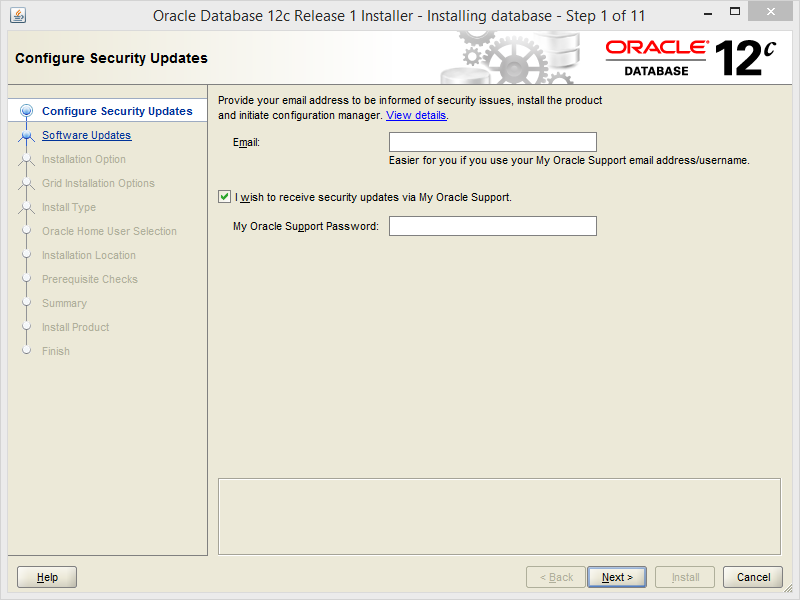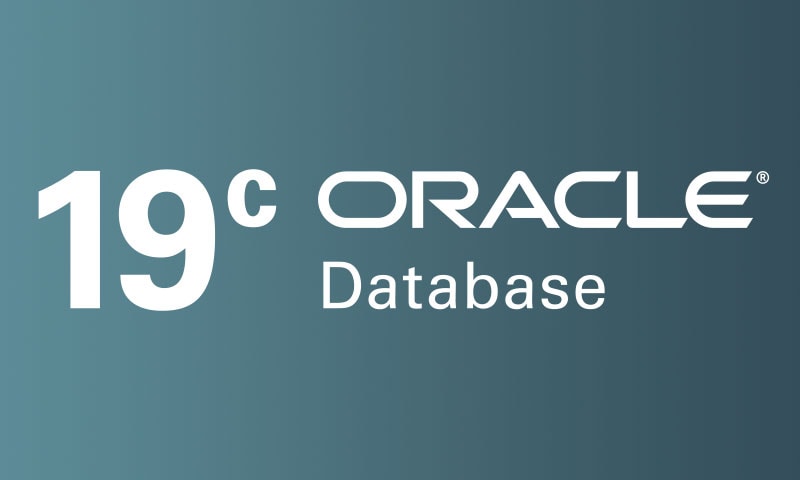
- #Oracle database download 12c install#
- #Oracle database download 12c update#
- #Oracle database download 12c software#
Create or modify the rules file in /etc/uded/rules.d/les. Use fdisk to create disk partitions on block devices for database filesĢ. If you decide to use ASM to store your database files, you have to proceed to the following steps:ġ. This method enables you to use the fast recovery area to retrieve data if the disk containing oradata is unusable for any reason.Ĭonfiguring storage for Oracle Database Files Using Block Devices Oracle recommends that you keep the fast recovery area on a separate physical disk other than the database file directory. The default fast recovery area is $ORACLE_BASE/fast_recovery_area. Regarding the recovery area file directory, dbi services recommends to create the following directory:Ĭhown oracle:oinstall /u99/fast_recovery_area In case you decide to store you data in a filesystem, dbi services recommends to create the following directories: In both cases you need 2GB of space for data and 2.4GB of space for Recovery files. You can either store your data and recovery area in ASM or in a file system. Mkdir /u00/app/12.1.0/grid_1_0 1.5 Creating data and recovery area directories Oracle as well as dbi services OFA standards recommend that you specify a path similar to the following for the Oracle home directory: If you have an existing Oracle Inventory path, Oracle Universal Installer will continue to use that Oracle Inventory.
#Oracle database download 12c software#
It is required and shared by all Oracle software installations on a single system. The Oracle Inventory directory (oraInventory) stores an inventory of all software installed on the system. The Optimal Flexible Architecture (OFA) guidelines (as well as the dbi services best practices) recommend that you use a path similar to the following for the Oracle base directory: You must identifiy or create the following directories for the Oracle Software: Passwd grid 1.4 Software Directories Creation Useradd -u 54322 -g oinstall -G oinstall,asmadmin,asmdba,dba grid Useradd -u 54321 -g oinstall -G dba,asmdba,backupdba,dgdba,kmdba oracle Now, still as a root, create the following users: On the root level, create the following groups: Indeed, Oracle Universal Installer prompts you to specify the name of the OSDBA, OSOPER, OSBACKUPDBA, OSDGDBA and OSKMDBA groups. These privileges allow to perform administrative operation such as backup or Data Guard monitoring.ĭuring the installation, you are prompted to provide operating system groups whose members are granted access to these system privileges. With Oracle 12c Release 1 (12.1), new and more task specific administrative privileges can be created. Those requirements can be checked with the oracle-validated-verify binary.ĭepending on the components you want to use, you must ensure that the following software is installed:ġ.3 Creating Required Operating System Groups and Users Once the package is installed, simply launch the oracle validated script as root:įor Linux x86 and Linux x86-64, Intel C++ Compiler 12.0.5 or later and GNU C and C++ are required.
#Oracle database download 12c install#
In order to check the package requirements, simply install oracle-validated package with the following command: To determine if the required kernel is installed, enter the following command: Red Hat Enterprise Linux 5.6 with unbreakable Enterprise Kernel

Oracle Linux 5.6 with red hat compatible kernel These are the kernel requirements for Oracle Database 12c on Linux x86-64: Distribution

To determine the Linux distribution and version installed, enter the following command:
#Oracle database download 12c update#


The minimum resolution for Oracle Database 12c is 1024×768 or higher 1.2 Checking the Software Requirementsĭepending on the products you are installing, verify that the following software is installed on you system: These are the disk space requirements for installing Oracle Database 12c Release 1 as well as Oracle 12g Release 2 and 1 on a Linux x86-64 architecture: Insallation Typeġ2.1c – Requirement for Software Files (GB)ġ1.2g – Requirement for Software Files (GB)ġ1.1g – Requirement for Software Files (GB) To determine if the system architecture can run the software, enter the following command: The following table describes the relationship between the installed RAM and the configured swap space recommendation: RAM


 0 kommentar(er)
0 kommentar(er)
